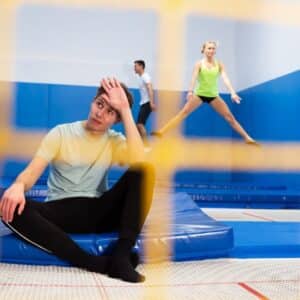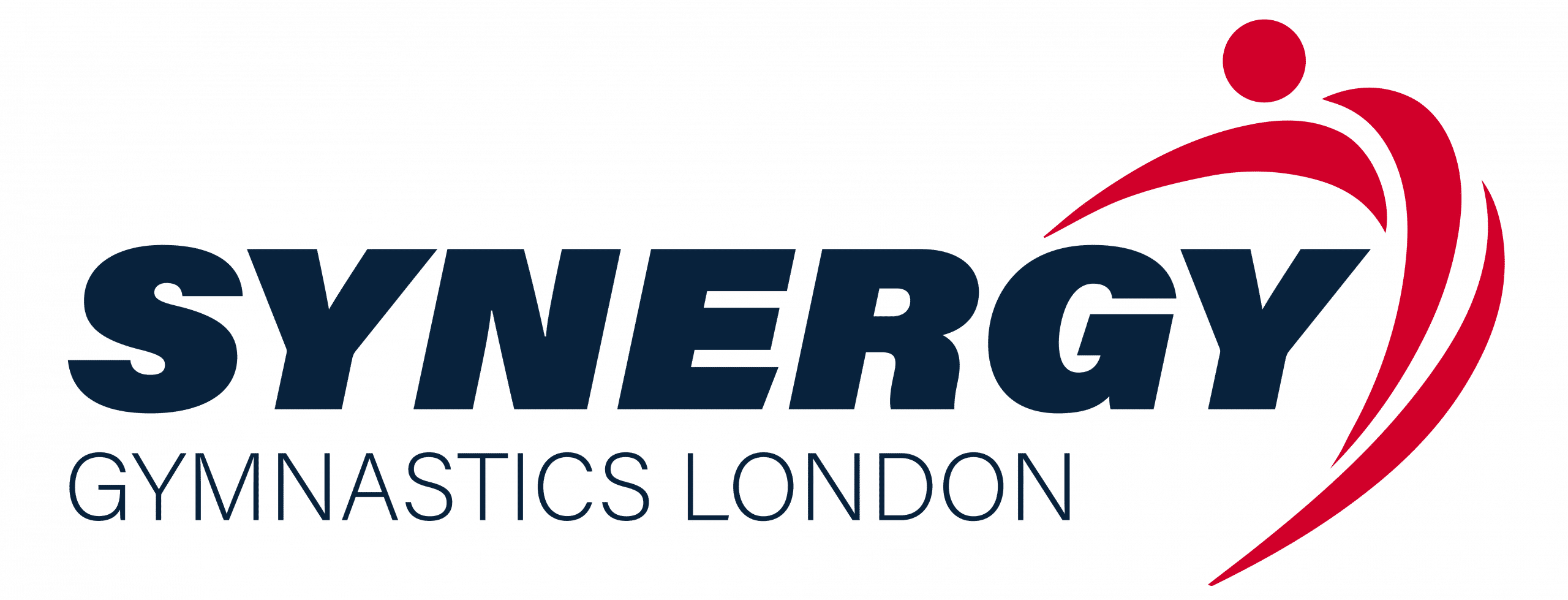
While gymnastics can offer many benefits, such as improved fitness and self-confidence, many people also ask what are the Long-Term Effects of Gymnastics on the Body? This question stems from the tough training that competitive gymnasts undertake and the concerns about the long-term effects it can have on the body.
In this article, we will explore some of the key questions surrounding gymnastics and its impact on physical and mental health.
Is Gymnastics Bad For Your Body?
Gymnastics is a physically demanding sport that can have both positive and negative long-term effects on the body.
One of the main concerns with gymnastics is the potential for long-term effects on the body. Gymnastics involves a lot of repetitive movements, particularly in the joints, which can lead to overuse injuries over time. Some studies have shown that former gymnasts may have a higher risk of developing osteoarthritis and other joint problems later in life.
In addition, gymnastics can sometimes lead to eating disorders and other mental health problems. This is because the sport is very competitive, and gymnasts often feel pressure to be thin and perfect.
Furthermore, gymnastics can lead to stunted growth and delayed puberty in some young athletes. This is because the intense training and low body fat levels required for gymnastics can interfere with the hormonal changes necessary for normal growth and development.
Common Injuries in Gymnastics
Injuries are a common occurrence in gymnastics, with some studies estimating that up to 50% of gymnasts will experience an injury each year. Common injuries include sprains and strains, fractures, and dislocations, particularly in the wrists, ankles, and knees.
Head injuries are also a concern in gymnastics, particularly in the case of falls from the balance beam or uneven bars. These can result in concussions or other traumatic brain injuries, which can have long-term effects on cognitive function and mental health.
Psychological Effects of Gymnastics
Gymnastics can also have psychological effects on athletes. The pressure to perform at a high level can lead to stress, anxiety, and depression, particularly in competitive gymnastics. In some cases, this can lead to eating disorders and other mental health issues.
However, gymnastics can also have positive psychological effects, such as improved self-confidence, self-esteem, and body image. It can also teach valuable life skills, such as discipline, perseverance, and goal-setting.
How to Prevent Injuries in Gymnastics
To prevent injuries in gymnastics, it is important to ensure proper training and technique. Coaches should emphasize safe landing techniques and avoid pushing athletes beyond their limits. Athletes should also wear appropriate clothing and protective gear.
Clothing at a competitive level will include a leotard as this is traditional in the sport.
Even at a recreational level clothing should be tight-fitting so it doesn’t catch on apparatus and cause an injury.
Hand guards protect the hands from rips when working on bars and whilst they can never be completely prevented, they significantly reduce the severity when working on skills such as swinging.
Regular strength and conditioning exercises can also help prevent injuries by improving flexibility and muscle strength. Stretching before and after practice can also help prevent muscle strains and other injuries.

Some tips for reducing your risk of injury include:
- Warming up before practice
- Cooling down after practice
- Stretching regularly
- Using proper technique
- Listening to your body
By following these tips, you can help to reduce your risk of injury and enjoy participating in a rewarding sport.
Is Gymnastics Bad for Your Spine?
There is some concern that gymnastics can be bad for the spine, particularly in the case of spinal compression injuries. These can occur when a gymnast lands incorrectly or from repeated impacts during training.
However, with proper technique and training, gymnastics can be beneficial for spinal health. The movements involved in gymnastics can help improve spinal flexibility and strength, which can reduce the risk of back pain and other spine-related problems.
Benefits of Gymnastics
Whilst so far in this article the focus has been on the more negative effects of gymnastics, there are still many positives to taking up the sport. It’s important to remember that gymnastics can be practiced on a recreational level too and many of the negatives associated with the sport apply mainly to competitive gymnasts.
Gymnastics is a great way to get in shape and improve your overall health. It can help you to lose weight, build muscle, and increase your flexibility. Gymnastics can also improve your coordination, balance, and strength.

Here are some of the specific benefits of gymnastics:
- Improved flexibility
- Increased strength
- Improved coordination
- Better balance
- Increased muscle tone
- Weight loss
- Reduced risk of injury
- Improved self-esteem
If you are interested in getting started with gymnastics, there are many different ways to get involved. You can join a gymnastics club or team, take private lessons, or even practice at home.
No matter how you choose to participate in gymnastics, you are sure to enjoy the many benefits that it has to offer.
How to Get Started with Gymnastics
If you’re interested in getting started with gymnastics, there are a few things you need to do first.
First, you need to find a gymnastics gym near you. You can do this by doing a search online or by asking friends or family members for recommendations. Once you’ve found a gym, you should contact them and ask about their programs and classes. Most gyms offer a variety of programs for different ages and skill levels, so you should be able to find one that’s right for you.
Then, you need to prepare yourself mentally for the challenges of gymnastics. Gymnastics is a demanding sport that requires strength, flexibility, and coordination. It’s important to be prepared for the hard work and dedication that is required to succeed in gymnastics.
If you’re willing to put in the work, gymnastics can be a rewarding and challenging sport. It’s a great way to stay active and meet new people.
When to Quit Gymnastics
It has been established that gymnastics can be demanding on the body, so whilst we would encourage everyone with an interest to make a start, it’s also important to know when to stop, or at least reduce the intensity at which a gymnast is training.
There are a few different factors to consider when deciding whether or not it is time to quit gymnastics. These include:
- Your physical and mental health
- Your goals and aspirations
- Your financial situation (gymnastics is expensive)
- The availability of other opportunities
If you are experiencing any physical or mental health problems that are related to gymnastics, it may be time to quit. For example, if you are constantly injured, or if you are struggling with anxiety or depression, it may be difficult to continue to participate in the sport.
If you have reached your goals in gymnastics, or if you no longer find the sport enjoyable, it may also be time to quit. For example, if you have always dreamed of competing at the Olympics, but you have not been able to make it to the national team, it may be time to consider other options.

Finally, if you have other opportunities that you would like to pursue, it may be time to quit gymnastics. For example, if you have always wanted to go to college, or if you have been offered a job that you are excited about, you may need to make the decision to quit gymnastics in order to pursue these other opportunities.
Making the decision to quit gymnastics can be difficult, but it is important to remember that it is a personal decision. There is no right or wrong answer, and what is right for one person may not be right for another. If you are considering quitting gymnastics, it is important to weigh the pros and cons carefully and make the decision that is best for you.
Conclusion
Gymnastics is a great way to get in shape and improve your overall health. It can help you to lose weight, build muscle, and increase your flexibility. Gymnastics can also improve your coordination, balance, and strength.
In conclusion, while there are some concerns about the long-term effects of gymnastics on the body, many of these concerns can be resolved through coaches taking a holistic approach to their training methods. Many of the outdated methods which caused long-term injuries are no longer acceptable and coach education now gives more value to science-based methods and a greater understanding of the mental health of gymnasts.
Sources:
Role of Intensive Training in the Growth and Maturation of Artistic Gymnasts. R Malina et al (2017)
FAQs
Do gymnasts develop joint problems later in life?
A significant number of gymnasts do develop joint problems later in life. This is often caused by over working and not resting when an injury occured during earlier years.
Is gymnastics bad for your back?
If taught properly gymnastics is beneficial for the back. When competitive gymnasts are pushed too hard this can cause negative effects on the body, including the back.
Does gymnastics make you skinny or muscular?
Gymnastics should not make you skinny however, numerous stories have emerged of coaches forcing gymnasts to lose weight in order to improve performance. This is considered unacceptable and gymnasts should seek advice if they feel pressured. Intense, competitive gymnastics training can make you muscular, though this is not vital.
What happens if you do too much gymnastics?
As with any sport if you do too much it can have negative effects like fatigue and decreased mental health. If a gymnast feels like this they should talk to someone about how they feel.
Is gymnastics a high risk sport?
Yes, gymnastics is considered a high risk sport. This is due to the inherent level of risk when performing somersaults, flips and other skills on apparatus.
- How To Get Over a Mental Block In Gymnastics: A Complete Guide
 Gymnastics is a sport that requires not only physical strength and skill but also mental strength. When a gymnast feels like they cannot attempt a… Read more: How To Get Over a Mental Block In Gymnastics: A Complete Guide
Gymnastics is a sport that requires not only physical strength and skill but also mental strength. When a gymnast feels like they cannot attempt a… Read more: How To Get Over a Mental Block In Gymnastics: A Complete Guide - Find The Best Leotard For Girls (Guide)
 Finding an ideal leotard for girls isn’t just about picking a dazzling design that sparkles (although it does help!). The leotard has to fit perfectly,… Read more: Find The Best Leotard For Girls (Guide)
Finding an ideal leotard for girls isn’t just about picking a dazzling design that sparkles (although it does help!). The leotard has to fit perfectly,… Read more: Find The Best Leotard For Girls (Guide) - The Best Gymnastics Shorts (Our Top Picks)
 The best gymnastics shorts are designed to be worn over the top of a leotard providing additional coverage around the upper legs, whilst allowing gymnasts… Read more: The Best Gymnastics Shorts (Our Top Picks)
The best gymnastics shorts are designed to be worn over the top of a leotard providing additional coverage around the upper legs, whilst allowing gymnasts… Read more: The Best Gymnastics Shorts (Our Top Picks) - Decathlon Leotards – Are They Any Good?
 If you’re in the market for a new leotard, you may be wondering if Decathlon leotards are any good considering the low cost of their… Read more: Decathlon Leotards – Are They Any Good?
If you’re in the market for a new leotard, you may be wondering if Decathlon leotards are any good considering the low cost of their… Read more: Decathlon Leotards – Are They Any Good? - A Complete Guide to Gymnastics Hand Rips
 Are you tired of dealing with painful gymnastics rips on your hands from training? Look no further – this article offers a comprehensive approach to… Read more: A Complete Guide to Gymnastics Hand Rips
Are you tired of dealing with painful gymnastics rips on your hands from training? Look no further – this article offers a comprehensive approach to… Read more: A Complete Guide to Gymnastics Hand Rips - Is Gymnastics Dangerous? (Facts and Comparisons)
 Gymnastics is acknowledged as a highly technical and physically demanding sport. It inherently carries a risk of injury, which is why most coaches and clubs… Read more: Is Gymnastics Dangerous? (Facts and Comparisons)
Gymnastics is acknowledged as a highly technical and physically demanding sport. It inherently carries a risk of injury, which is why most coaches and clubs… Read more: Is Gymnastics Dangerous? (Facts and Comparisons)
